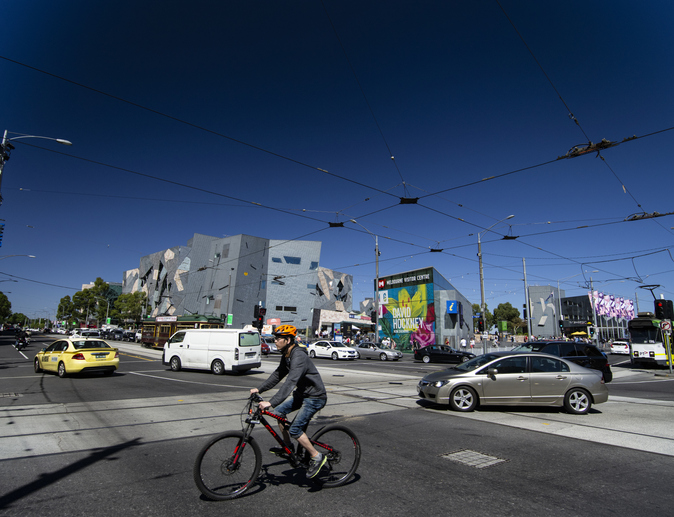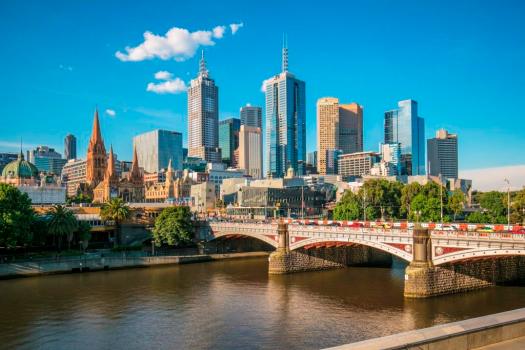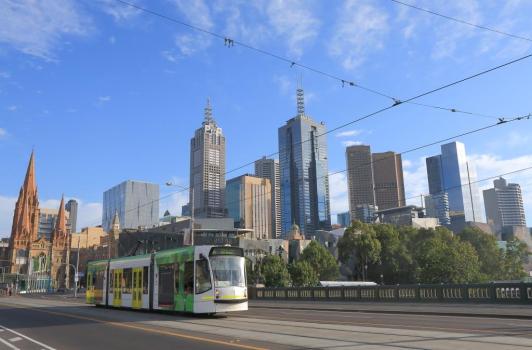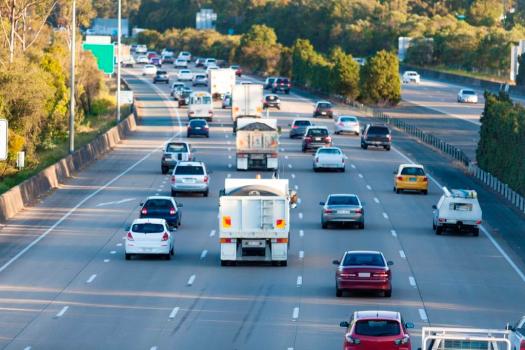
Cyclists and pedestrians will get more space in Melbourne’s CBD and cars less under the city’s 10-year transport plan.
The draft transport plan released on Thursday proposes repurposing road space equivalent to 20 Bourke Street malls as areas for walking, cyclists, trade and other public purposes.

More than 50km of protected on-road bike lanes leading to the central city will also be built under the plan.
“Melbourne will be Australia’s premier bicycle city,” the plan says.
“More people will be confident to ride with a connected network of safe protected bicycle lanes and high quality bicycle parking.”
The vision also includes the conversion of CBD ‘Little Streets’ into pedestrian-priority shared zones with lower speed limits for cars to support local shops and cafes.
Focus on walkability
Lord Mayor Sally Capp says a focus on walkability will deliver billions to the local economy.
“We know that a 10 per cent increase in pedestrian connectivity can deliver an extra $2.1 billion to Melbourne’s businesses. At the moment, 89 per cent of all trips in the central city are on foot and walkers face increasingly overcrowded footpaths,” she said.
Transport Chair Cr Nicolas Frances Gilley said many of the world’s greatest cities including Vienna, New York and Barcelona have already recognised the need to create more walkable cities – a lesson Melbourne would follow.
“Greater Melbourne is one of the fastest growing cities in the world and our population is projected to more than double in the next 30 years. If we are to maintain our status as one of the world’s most liveable cities we have to create beautiful spaces for people to want to come and enjoy,” Cr Gilley said.
The plan will discourage traffic from entering central areas of the city, apart from essential car trips involving those with disability, trade, service or emergency vehicles.
Council will also “lead a public conversation” about trialling road pricing to reduce congestion.
Cr Capp said car trips to the city have already decreased by 25 per cent since 2001, with most people travelling to work by train.
“The delivery of projects such as Melbourne Metro will see car dependency continue to decline as more convenient transport alternatives become available.”
It comes as the city grapples with a growing population with more than 900,000 people moving around the city each day – a figure set to increase to 1.4 million by 2036.
The frequency of bus and tram services will be increased and council consider dedicated public transport lanes and review traffic signal operations to reduce delays.
All transport in the municipality will be emissions-free by 2050 under the plan and the city will push a transition from motor vehicles to electric by becoming a ‘city lab’ test bed for smart mobility and micro mobility trials.
Bid to lower pedestrian death
The plan is also aimed at improving safety for pedestrians, Cr Gilley said, with the strategy proposing a trial to expand the 30km/hr zone on Swanston Street to other streets in the central city.
“Our municipality has the most collisions between pedestrians and cars in Victoria, with an average of one death and 46 pedestrian injuries each year. We want to work with the Victorian Government on a trial to create safer streets through a review of central city speed limits,” Cr Gilley said.
“By exploring a trial to lower the speed limit in select areas of the central city to 30km/hr we could increase the chance of a pedestrian surviving a crash to 90 per cent.
“We know from international cities that this can boost safety while having a minimal impact on vehicle journeys. In Dublin for example, a speed limit drop added just 20 seconds to people’s car trips.”
Safety for public transport users is also a focus of the plan, which includes initiatives to reduce overcrowding at tram stops, busy intersections and major train stations.
The city will continue to collaborate with the state to ensure that its $38 billion investment in road and rail projects is supported by infrastructure in the inner city, the Lord Mayor said.
The strategy named massive population growth, congestion, a more reliable public transport network and pedestrian safety as key issues for the city.
Council will consider the draft strategy on May 7.
Comment below to have your say on this story.
If you have a news story or tip-off, get in touch at editorial@governmentnews.com.au.
Sign up to the Government News newsletter


